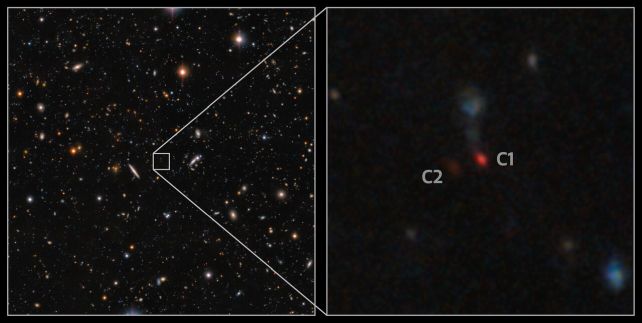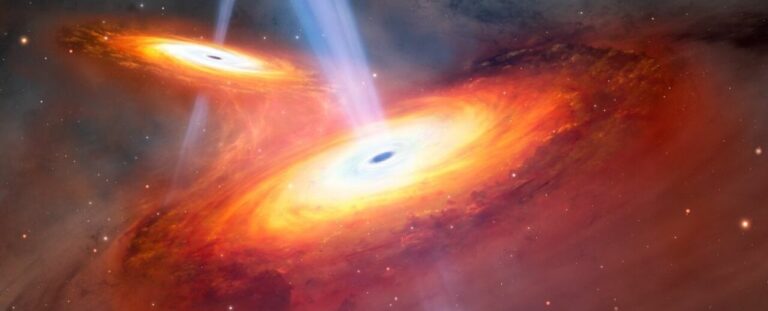Two Massive Black Holes Spotted Colliding for the First Time During the Cosmic Dawn.
We recently got convincing evidence that galaxies can merge and therefore a collision in the early Universe could take place.
These are two luminous quasars, or galaxies with exceptionally bright centers containing supermassive black holes, which merged during the Cosmic Dawn, approximately 900 million years after the Big Bang.
This finding also shows that whether colliding quasars exist in this time has been the first discovery ever. The Cosmic Dawn, a time identified in the universe soon after Big Bang where the formation rate of galaxies and other celestial matters are believed to be at its peak, is believed to feature merging galaxies but earlier surveys have only been able to find single galaxies.
Astronomers were glad with the fact that after years of hunting the Wreck, astronomers have finally confirmed a collision of two quasars and this detection could help in searching for more galactic collision in the coming Cosmic Dawn observations.
“Though telescopes started noticing the phenomenon in the 1960s, merging quasars during the Epoch of Reionization were expected all along,” said astronomer Yoshiki Matsuoka of Ehime University in Japan. ”It is a confirmation that we could consider a major event. ”
Quasars are some of the brightest objects in the universe and are found to be created as a black hole eats a great deal of material at a very high speed. This causes the glowing light that is witnessed to be as a result of the bombardment of the gravitational and frictional forces exerted on the existing dust and gaseous particles.
Researchers suggest that quasars are in fact formed as a consequence of galaxies merging together, with the additional material masses acting as a central region for the galaxy. It happened in the more recent past and at the present time, where signs of mergers, for example, of galactic centers containing two or potentially multiple SMBH accelerating towards a collision, have been detected.
As a result, and as we have seen earlier since a lot of quasars have been observed in the early Universe because they are brighter and easier to spot, cosmologists expect a high rate of galaxy mergers during the Cosmic Dawn.
This, in turn, would help us in our quest to comprehend an early Universe phase called the Epoch of Reionization; during this phase, brilliant light cleared the thickening neutral hydrogen ‘fog,’ enabling light to travel unimpeded.
But the search for these mergers has been very difficult to accomplish in real sense.
However, the discovery was rather incidental to the general process. One day, while working on data collected through Subaru Telescope, Matsuoka and his colleagues noticed that something was off.

“While screening images of quasar candidates I noticed two similar and extremely red sources next to each other,” Matsuoka says. “The discovery was purely serendipitous.”
It is not clear what two red blobs next to each other might represent, they could be anything. For instance, space-time bending between the source and the viewer can cause the light of a single object to be split and duplicated, thus making the object appear to be two or more.
Thus, the researchers performed follow-up observations utilizing Subaru Telescope and Gemini North, as well as Atacama Large Millimeter/Submillimeter Array (ALMA).
These observations showed that the objects were not just real and extremely distant, but were very close to each other with a distance of only 40 thousand light years.
The team was also able to deduce that about fifty percent of the light emitted by the galaxies is due to star formation and that the two are in the process of merging since there is a bridge of gas joining them.
Each is also estimated to contain a supermassive black hole of a size of about 100 million times the mass of the Sun. That’s big for the early Universe – even the Milky Way’s central black hole is just 4. 3 million solar masses.
It is a beautiful find and one that suggests further of its kind in the future. As for the researchers, they are in the process of studying the ALMA observations in order to determine the properties of the dust and the gas which envelops the two galaxies. The findings will be published in a separate paper.
The research has been published in The Astrophysical Journal Letters.
Do not forget to share your opinion with us to provide you with the best posts !




0 Comments